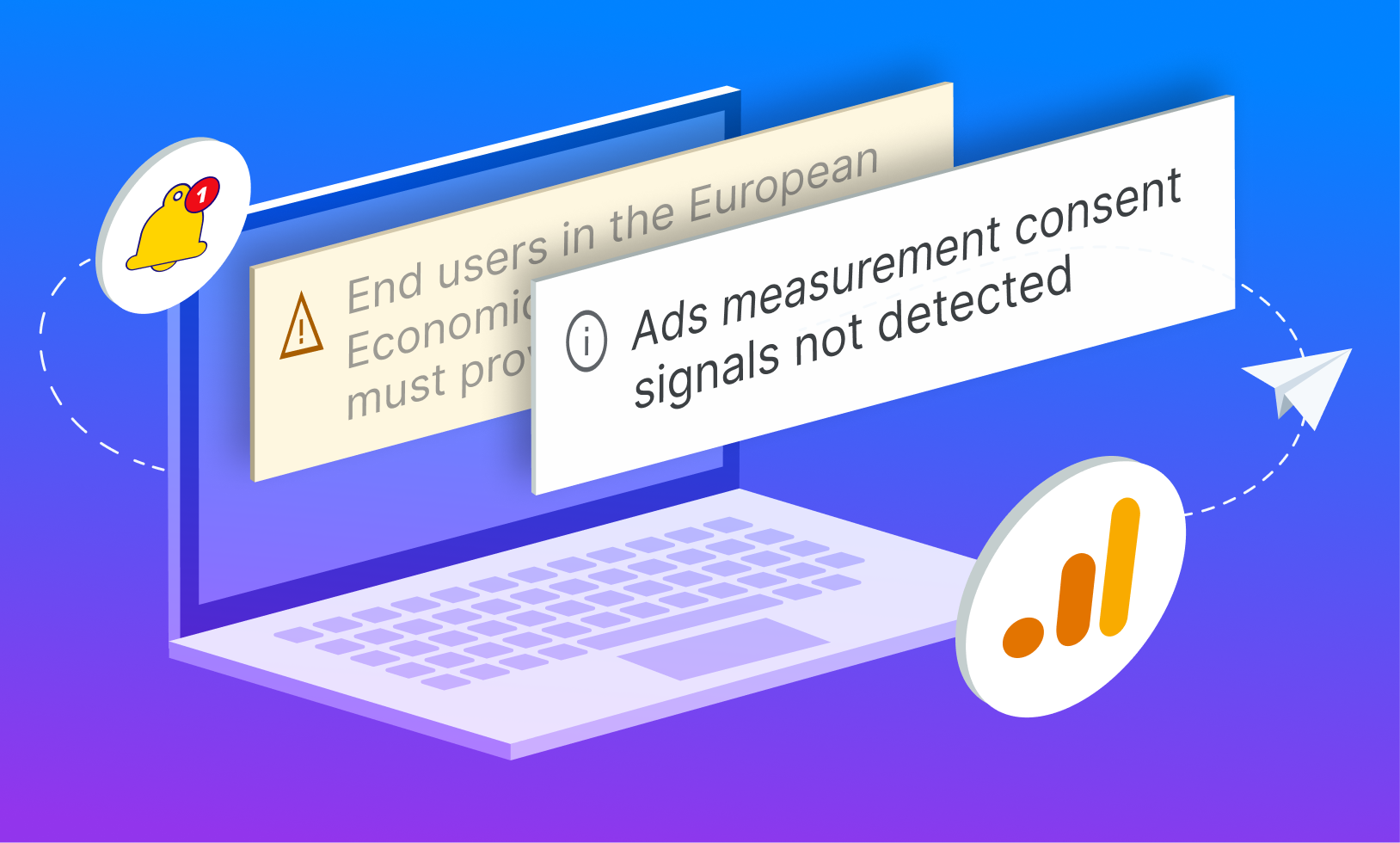How to resolve “Ads personalisation consent signals not detected” notification in Google Analytics?

Starting from March 2024, a fresh batch of notifications in Google Analytics has been catching the attention of website owners across the European Economic Area (EEA). These notifications might read:
- “Verify your consent settings for end users in the European Economic Area (EEA)”
- “Ads personalisation consent signals not detected (Action required)”
- “End users in the European Economic Area (EEA) must provide consent for their personal data to be shared with Google”
Encountering one of these messages? Not to worry – this post is here to decode what they’re about and how you can sort them out.
Summary
- Why do I see “Ads personalisation consent signals not detected” alerts?
- What is Consent Mode v2?
- How to enable Consent Mode v2?
- How to resolve “Ads personalisation consent signals not detected” notification in Google Analytics?
- Why choose Clickio Consent as your Consent Mode v2 CMP?
Why do I see “Ads personalisation consent signals not detected” alerts?
Due to regulatory changes in Europe, especially the Digital Markets Act (DMA), Google now requires all website owners who advertise to European users, create audience lists and measure conversions, to implement Consent Mode v2 – a new way to pass consent signals to Google. Naturally, this requirement also covers Google Analytics, which can be used for targeting and conversion tracking.
What is Consent Mode v2?
Consent Mode v2 is Google’s framework allowing websites to communicate their users’ privacy preferences to Google’s services such as Analytics, which then adapt their functionality based on these consent signals. It introduces seven categories of data processing, with four being essential for the operation of Google services:
- Analytics Storage. Enables website analytics storage.
- Ad Storage. Enables storage related to advertising.
- Ad User Data. Consent for sending user data to Google for advertising purposes.
- Ad Personalization. Consent for personalized advertising.
There are also categories for functionality, personalization, and security storage, enabling website owners to fine-tune other scripts based on user consent. Learn more about Consent Mode v2 in our guide.
How to enable Consent Mode v2?
Compliance begins with obtaining consent from your users via a clear pop-up explaining the use of cookies and data processing intentions. Next, it’s essential to effectively communicate these consent choices to Google tags.
A Consent Management Platform (CMP) that supports Consent Mode v2 and is certified by Google simplifies this process, ensuring you meet both regulatory and Google’s requirements. A CMP can both show consent pop-ups to users, store their choices, and send consent signals to 3rd parties such as Google.
How to resolve “Ads personalisation consent signals not detected” notification in Google Analytics?
Once you have selected your Google Certified Consent Management platform (check the Google Certified CMP List), implemented it on your site and activated Google Consent Mode v2 in settings, Google will detect that your site is now compliant and will remove the notification from your Google Analytics account.
Below, you can find how to activate Google Consent Mode v2 if you use Clickio as your Google Certified CMP:
1. Create a GDPR Consent Banner
2. Activate Consent Mode v2
3. Choose Vendors you use on your site, including Google
4. Install the tag provided in the platform
5. Enjoy being compliant with Consent Mode v2!
Why choose Clickio Consent as your Consent Mode v2 CMP?
Clickio Consent, a Google-certified CMP, makes Consent Mode v2 activation extremely easy. Benefits include:
- Google Certification: Ensuring compliance and compatibility.
- Easy Setup: Quick installation via script or Google Tag Manager.
- Real-time Analytics: Insightful data analysis.
- Customizable Design: Tailor the look and disclosures to fit your site.
- Framework Support: Compliance with Transparency and Consent Framework v2.2.
Ready to meet Consent Mode v2 requirements effortlessly? Sign up now, or get in touch for more information.
